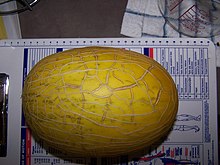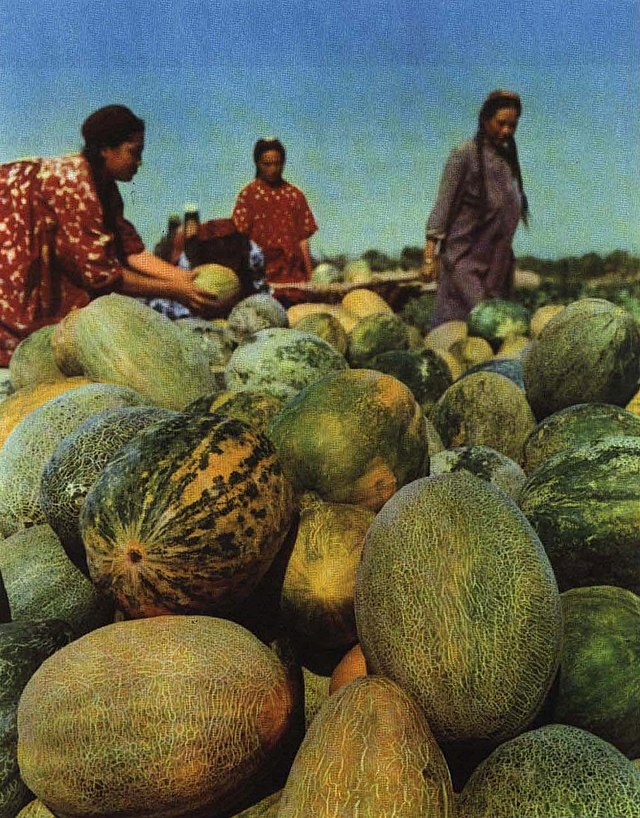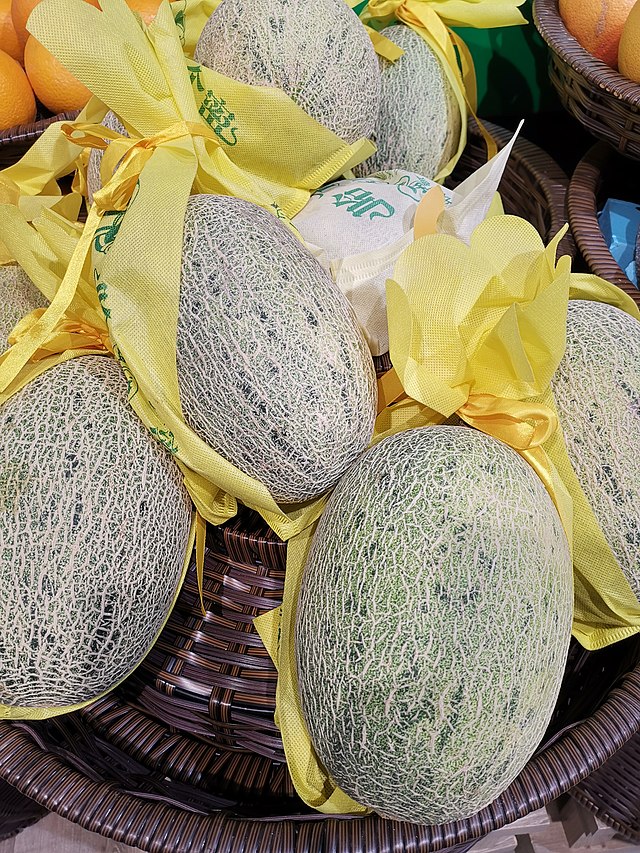The Hami melon is an umbrella term for sweet melon varieties from Xinjiang, China, especially from Hami. It is also referred to as the Chinese Hami melon or the snow melon. The outer color is generally white through pink or yellow through green. The inside flesh is sweet and crisp.
| Hami melon | |
|---|---|
 | |
| Genus | Cucumis |
| Species | C. melo |
| Cultivar group | Ameri Group, Inodorus Group, Chandalak Group |
| Hami melon | |||||||||||
|---|---|---|---|---|---|---|---|---|---|---|---|
| Traditional Chinese | 哈密瓜 | ||||||||||
| |||||||||||


Cultivation
The origin of the Hami melon can be traced back to the Han dynasty in China. From 58 to 76 AD, Hami melons were given to Emperor Ming of Han by officials as a rare tribute from the Western Regions and called kùhóng (Chinese: 库洪).[1]
Xinjiang's unique geographical environment (high altitude, large temperature difference between day and night, and sufficient sunshine) has created different varieties of Hami melon, such as the Yellow Honey Hami Melon and the Red Honey Hami Melon.[2] More than 100 cultivated forms and hybrids of the 'Hami' melon have been grown in China.[3]
The Xinjiang Uygur Autonomous Region has different protected areas for the cultivation of Hami melon, among which Yiwu County, Hami, has an area the length of 150 kilometers. The storage method of Hami melon at low temperatures is also unique. Among them, Gold Queen Hami Melons can be stored at 3°C for 18 days and still maintain the original taste.[4]
References
Wikiwand in your browser!
Seamless Wikipedia browsing. On steroids.
Every time you click a link to Wikipedia, Wiktionary or Wikiquote in your browser's search results, it will show the modern Wikiwand interface.
Wikiwand extension is a five stars, simple, with minimum permission required to keep your browsing private, safe and transparent.
